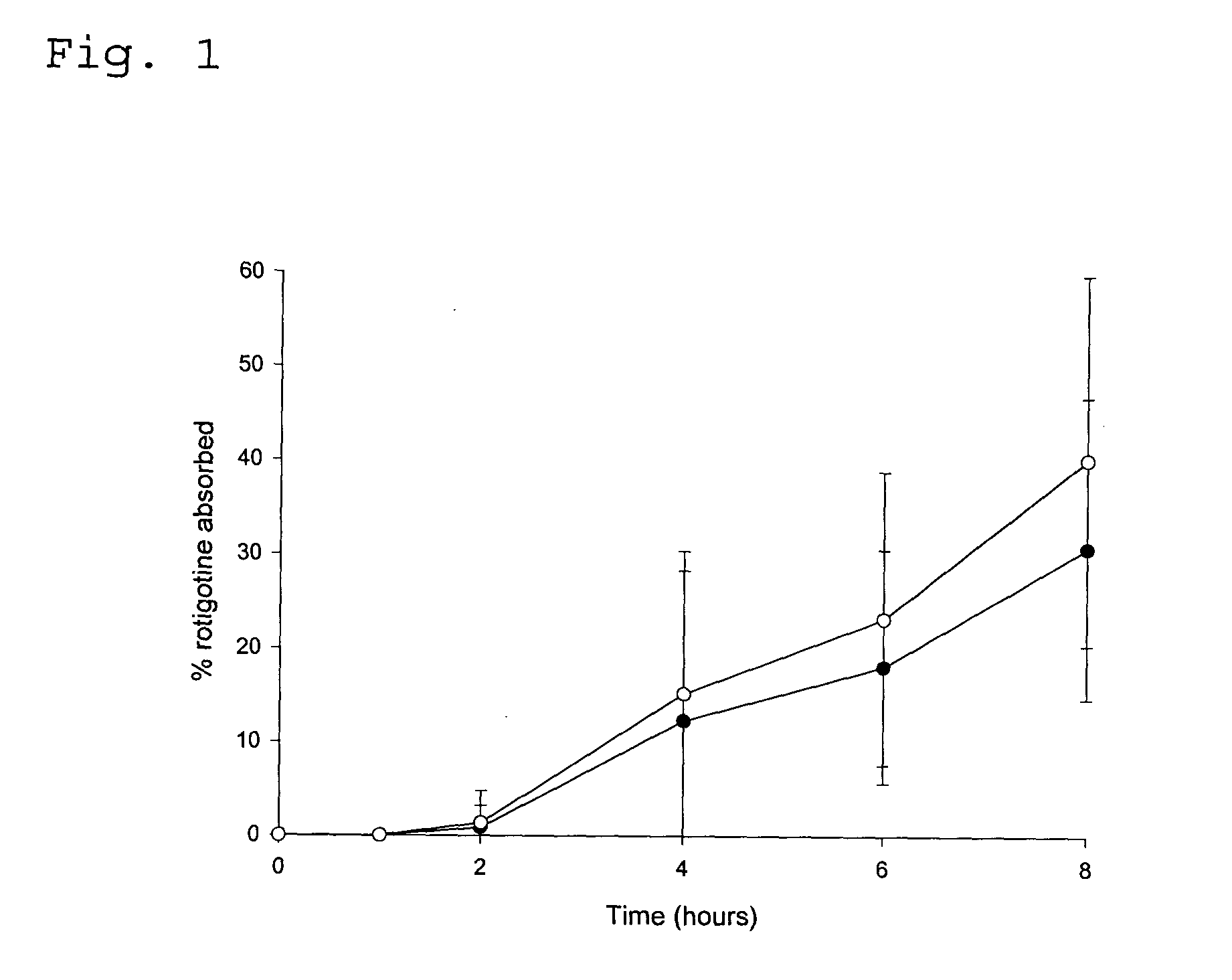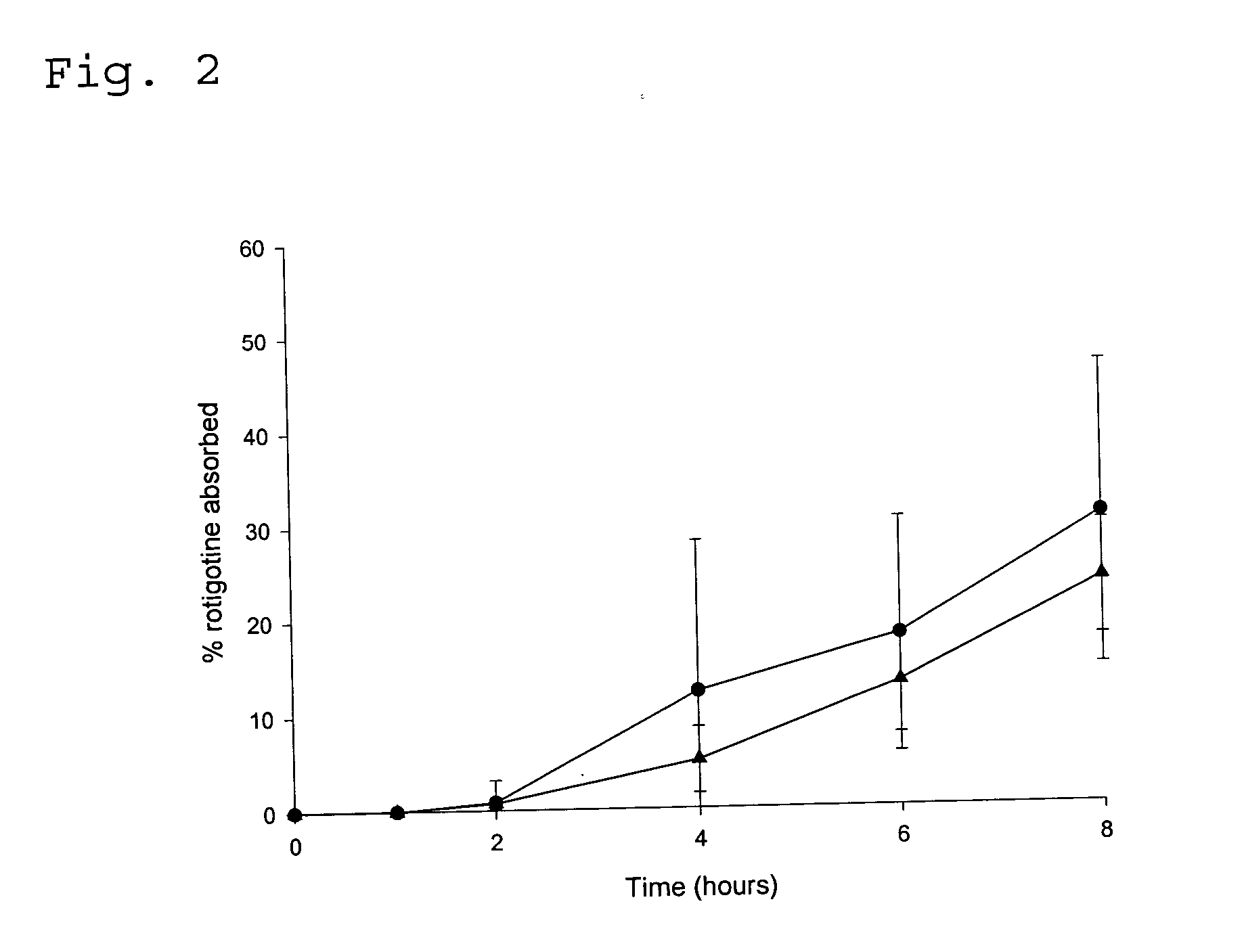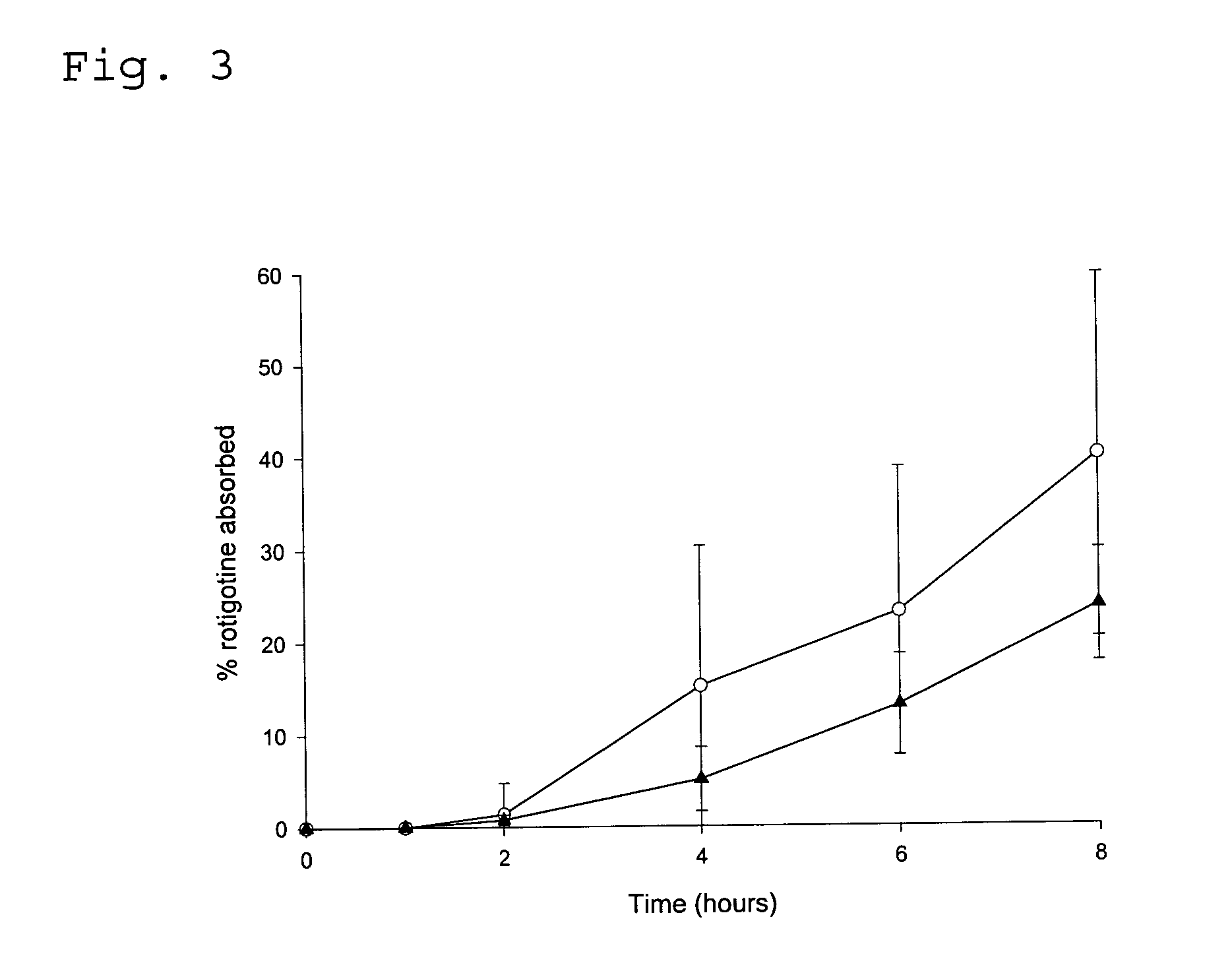Transdermal delivery system for the administration of rotigotine
a technology of rotigotine and transdermal delivery, which is applied in the direction of dressings, heterocyclic compound active ingredients, bandages, etc., can solve the problems of insufficient drug plasma levels and more or less limited type of membrane controlled systems in practi
- Summary
- Abstract
- Description
- Claims
- Application Information
AI Technical Summary
Benefits of technology
Problems solved by technology
Method used
Image
Examples
invention example 1 (
VERY LOW SALT CONTENT, SMALL MICRORESERVOIRS)
[0068] 252.6 g Rotigotine free base are dissolved in 587.8 g ethanol 100% w / w and mixed with 222.2 g ethanolic solution containing 25% w / w polyvinylpyrrolidone (Kollidon F 90), 0.11% w / w aqueous sodium bisulfite solution (10% w / w), 0.25 % ascorbyl palmitate and 0.62% DL-α-tocopherol. To the homogenous mixture 1692.8 g BIO-PSA Q7 4301 (73% w / w), 1691.6 g BIO-PSA Q7 4201 (73% w / w) and 416.3 g petrol ether are added and all components are stirred for at least 1 hour to get a homogenous dispersion.
[0069] For manufacture of the patch matrix, the dispersion is coated onto a suitable release liner (for example Scotchpak 1022) and the solvents are continuously removed in a drying oven at temperatures up to 80° C. to get a drug-containing adhesive matrix of 50 g / m2 coating weight. The dried matrix film is laminated with a polyester-type backing foil which is siliconized on the inner side and aluminium vapor coated on the opposite side.
[0070] The...
example 2
[0086] In vivo Drug Absorption Test
[0087] In order to monitor the absorption of rotigotine by the human skin the following experiment was carried out. The test was performed with the TDS obtained in Example 1 as well as in Comparative Examples 1 and 2.
[0088] The plasma concentration time profile at different test times was determined in pharmacokinetic studies involving (A) 14 healthy male persons (TDS of Comparative Examples 2 and 3) or (B) 30 healthy male persons (TDS of Example 1 and Comparative Example 1), respectively. The studies were conducted following an open single-dose randomised (B) two-way or (A) three-way cross-over design.
[0089] Individual concentrations of rotigotine were determined by means of liquid chromatography and mass spectroscopy. The lower limit of quantification (LOQ) was 10 μg / ml.
[0090] The drug absorption was calculated from the plasma concentration data according to the Wagner-Nelson method (Malcom Rowland, Thomas N. Tozer (Eds.) “Estimation of Adsor...
example 3
[0095] In vitro Diffusion Experiment with Transdermal Drug Delivery Systems
[0096] The test was performed with a sandwich of consecutively a supportive separator membrane, skin and the TDS. Active substance that has diffused from the TDS through the skin and / or membrane dissolves in an acceptor liquid that continuously passes directly underneath the membrane; the acceptor liquid was collected in tubes in a fraction collector; and the fractions were analysed for their content of rotigotine. The flux of active substance through skin was calculated by correcting for the influence of the separator membrane.
[0097] The diffusion cell described in Tanojo et al (Tanojo et al. “New design of a flow through permeation cell for in vitro permeation studies across biological membranes” Journal of Controlled Release (1997), 45, 41-47) was used in order to conduct the experiment.
[0098] A flask containing the acceptor liquid and the assembled diffusion cells were placed in a temperature-controlle...
PUM
| Property | Measurement | Unit |
|---|---|---|
| Diameter | aaaaa | aaaaa |
| Sensitivity | aaaaa | aaaaa |
Abstract
Description
Claims
Application Information
 Login to View More
Login to View More - R&D
- Intellectual Property
- Life Sciences
- Materials
- Tech Scout
- Unparalleled Data Quality
- Higher Quality Content
- 60% Fewer Hallucinations
Browse by: Latest US Patents, China's latest patents, Technical Efficacy Thesaurus, Application Domain, Technology Topic, Popular Technical Reports.
© 2025 PatSnap. All rights reserved.Legal|Privacy policy|Modern Slavery Act Transparency Statement|Sitemap|About US| Contact US: help@patsnap.com



